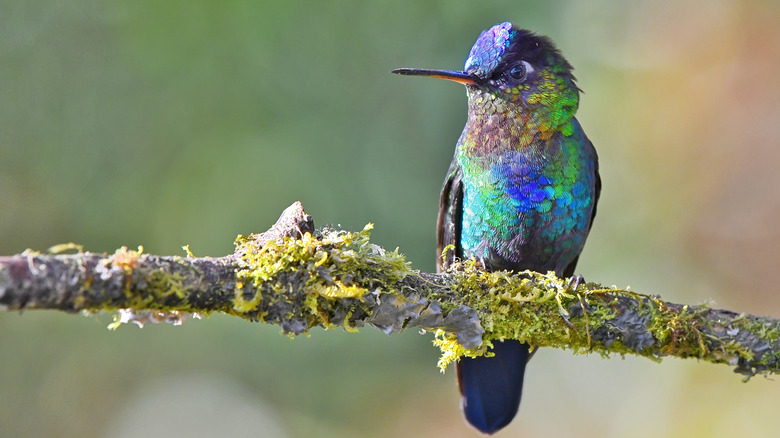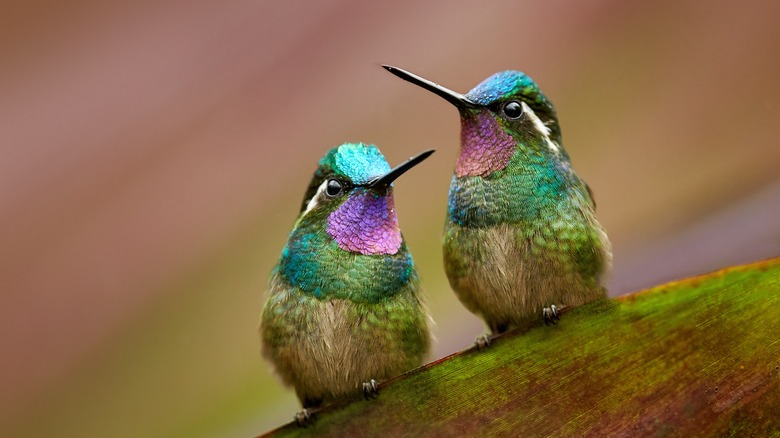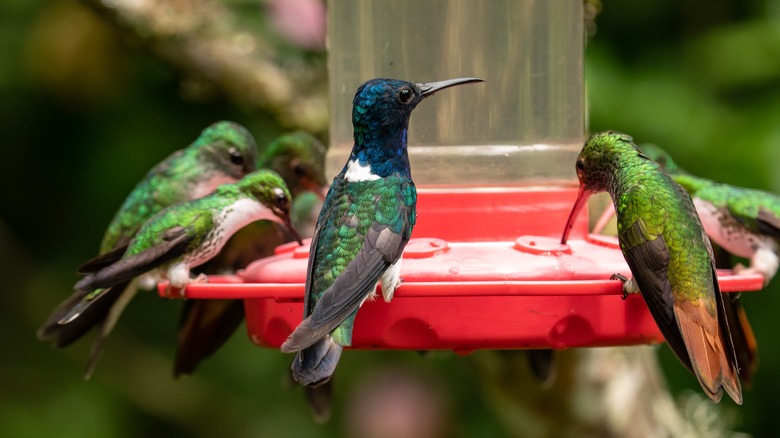Why Leaving Grape Jelly Out Could Be Deadly For Hummingbirds
Leaving food out for birds should be fun. It's a sweet gesture, and can absolutely be a great way to keep birds coming back to your home if you'd like them to be regulars. But be sure grape jelly isn't on the snack list because when you start having a bird feeder in your yard, unfortunately, this sweet can be deadly. Last summer, Raptor Education Group Inc. (REGI) admitted three hummingbirds, one dead on arrival and the other two struggling for their lives, that were all covered in grape jelly. Throughout the months that followed, more and more hummingbirds were rescued with the same issue.
For the most part, humans aren't actively watching their feeders, and many aren't qualified to properly take care of birds that do need actual care. If you ever find yourself in this predicament, gently clean the hummingbird in a warm salt water solution, made up of 1 teaspoon of salt and 1 cup of water. A bottled saline solution works just fine, too. Overall, though, so much of this can be fixed with proper education on how and what to feed hummingbirds, so keep reading if you need a quick breakdown on how to be better for the birds.
Why grape jelly is so hazardous to hummingbirds
First things first, let's talk through why grape jelly is so hazardous. Orioles, a bird with major similarities and differences to hummingbirds, have been known to eat sweeter snacks like orange halves and jellies. Though these majestic birds can stomach such novelties, hummingbirds cannot. Of course, if your feeder is open to all birds, this can become a major issue since hummingbirds are big fans of both the sweet aromas of the jelly, as well as the insects it naturally attracts.
These nectar addicts have weak feet, so gripping wide surfaces and walking can be difficult for them. Slipping into the jelly is common and as the weather warms, the consistency of the jelly can melt and allow their wings, feet, and feathers to get covered in the substance. Flying away becomes difficult and as the jelly hardens, many of their abilities deteriorate, leading to death or major injury. On top of that, the jelly also has a high amount of artificial sugar that is not healthy for any bird, especially if they are consistently feeding from your home feeder.
Combating this starts with knowing what types of food you put in your feeder, as well as the style of trays you put snacks in. Opt for smaller, lipped dishes that aren't too large for any bird to get trapped. If you feed other birds, be sure to keep an eye out for which birds frequent your feeder, that way you can be sure you're offering the right types of snacks.
Healthier snack alternatives for hummingbirds
If you don't want hummingbirds to steer clear of your yard, here are a few healthy options you could offer to attract them. Because birds have only really learned to process the sugars they find naturally in the wild, there's such a thing as bird jelly like this one, perfect for gifting birds with a sweet tooth. Because the consistency stays thick, it's a lot easier for the birds to process, while they obtain quality nutrients free of cornstarch and preservatives. Other options include orange slices, as they're great for all birds, as well as nectar. Make your own hummingbird-safe nectar by mixing one part water and four parts sugar until it's completely dissolved. Be sure not to add any dye, then fill your feeders with the water. Change this every other day and clean it often to prevent mold or mildew buildup.
Because their diets are a bit more complex, proteins are also extremely beneficial. Try putting your feeder on a tree that regularly gets lots of aphids, mosquitoes, spiders, and ants, to help your hummingbird maintain a balanced diet. Beyond being a gorgeous bird that needs to be protected, they're a natural pest control that can help any home or garden. Pro tip: add red to the garden to help attract hummingbirds.


